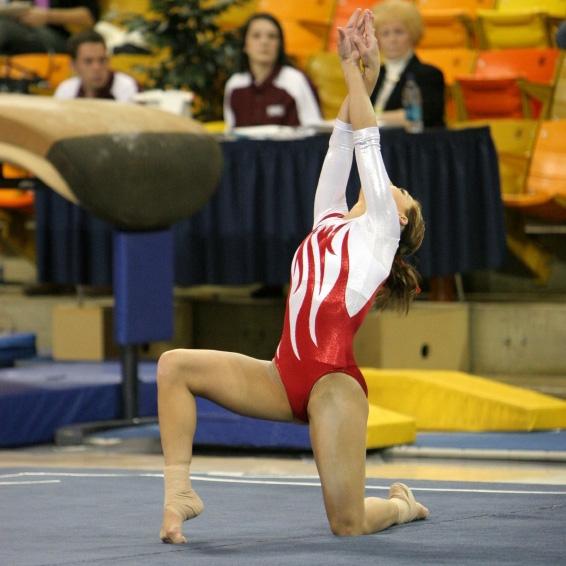
Gymnastics is tough. (If you’ve watched “Make It or Break It” – and hey, it’s okay to admit you’ve seen it once or twice — you know what we mean.) We’re not talking about dealing with the competition or coaches or mental blocks. We’re talking about the injuries that can result from constantly contorting their bodies. Our favorite gymnasts seem to make all of the flipping, flying, twisting, and turning they do look easy. (Why wouldn’t you be able to do a flip in the air and blindly land on a four-inch beam?!) From their ankles to their shoulder to everything in between, gymnasts’ bodies take constant beatings on each landing and each trick.
Common Gymnastics Injuries
First, let’s meet our ATI Injury Analyst. Bernadette Crompton, a physical therapist at our ATI North Wilmington clinic in Delaware, weighed in common gymnastics injuries and why they occur in the first place.
Hyperflexibility
Bernadette explains that gymnasts are trained to be hyper-flexible. They are constantly extending their body, which can lead to less static stability. Bernadette suggested that gymnasts focus on core stabilization. Strengthening muscles through a variety of core and flexibility exercises can help prevent many types of chronic and impact injuries.
Impact Injuries from Gymnastics
Because gymnasts constantly perform movements which result in hard landings (or sometimes even falls), various injuries may occur
- Back injuries: Because of repeated hard landings (and even falls), the lower back can be very susceptible to injuries, as it becomes too fatigued to actually protect the spine. Gymnasts are prone to a variety of back injuries, including fractures, herniated disks, and disk degeneration.
- Ankle sprains: These sprains happen when the ligaments surrounding the ankle joint stretch and tear, likely a result of a hard landing or fall. Wrist sprains: Like ankle sprains, wrist sprains often occur from hard landings or falls on the hands when tumbling.
- Stress fractures: Another result of overuse, stress fractures in the legs occur from continuously subjecting the body to hard landings and falls.
- Concussions: The head may be impacted in a hard fall, which can lead to concussions. (We saw McKayla Maroney leave the June VISA Championships with a mild concussion after sustaining a hard fall.)
Tips for Gymnastics Injury Prevention
Short of quitting gymnastics altogether, there are few ways to avoid the toll the sport takes on your body, especially if competing at the Olympic level. However, our Olympic Injury Analyst dished out some safety tips that the best gymnasts use to keep their bodies in peak condition:
- Warm up and stretch: Yes, you’ve heard it before, but proper stretching is essential to avoiding an injury, no matter what the sport.
- Cool down and stretch: After a few grueling hours of practice, gymnasts need to take the time to properly cool down and stretch. This helps sustain muscles and keep them flexible, which are both important parts of avoiding injuries.
- Core stability exercises: Because of the hyper-flexibility of gymnasts, they must perform regular core stability exercises. Bernadette suggested exercises like planks and ball stabilization can help strengthen the core.
- Proper nutrition: Our Injury Analyst noted that gymnasts need to maintain a diet high in protein, a nutrient essential for strong muscles.
